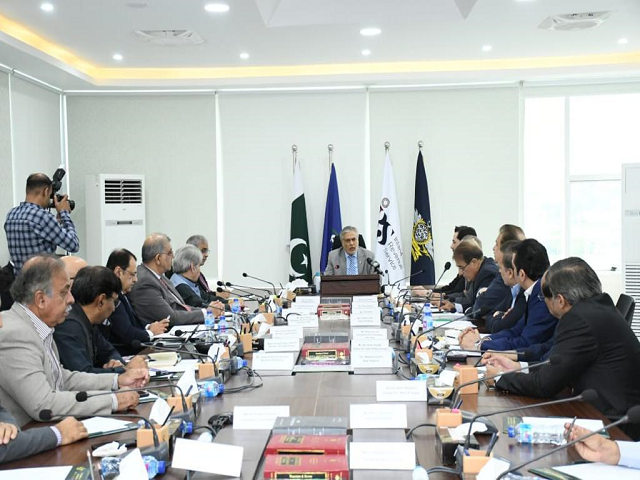In Islamabad, the federal government’s expenditures surged by 50% to Rs7.5 trillion during the initial seven months of the current fiscal year, posing a challenge that the political leadership aims to address through a technocratic-bureaucratic setup in the finance ministry.
Compared to Rs 7.5 trillion spent during the same period in the previous fiscal year, the federal government disbursed Rs7.53 trillion in the first seven months of the current fiscal year. A significant portion of these expenditures, amounting to Rs4.66 trillion, went towards interest payments on the debt, representing 65% of current expenditures.
Despite efforts to contain spending, the increase in expenditures exceeded 50%, primarily due to the decision to link the interest rate with the headline inflation rate. This decision, made to maintain a positive interest rate against headline inflation as per the International Monetary Fund (IMF) agreement, has led to substantial and uncontrolled interest payments, which have now surpassed the federal government’s net income by Rs280 billion.
Despite a slowdown in development expenditures, with only Rs211 billion allocated in seven months, fiscal consolidation remains elusive, largely due to the IMF program’s restrictions on lowering the interest rate. The current high-interest rate has failed to curb inflation, which remains in double digits above 20%.
In response to these challenges, Prime Minister Shehbaz Sharif has initiated discussions with the IMF for a long-term Extended Fund Facility (EFF). However, concerns remain regarding the adequacy of the current bureaucratic and technocratic setup in the Ministry of Finance to effectively negotiate with the IMF.
The government’s debt has surged to Rs64.8 trillion by January, with an increase of Rs4 trillion in seven months, outpacing the federal deficit despite the rupee’s appreciation. The budget deficit, including interest payments, amounted to nearly Rs3.2 trillion, or 3% of GDP, during the first seven months of the fiscal year, marking a significant increase compared to the same period last year.
Although the federal government has managed to achieve a primary budget surplus of Rs1.93 trillion, non-tax revenues saw a substantial increase, primarily driven by petroleum levy collection and higher profits of the central bank. Despite robust revenue collection by the Federal Board of Revenue, the government’s total net income, after transferring provincial shares, remains insufficient to cover interest payments.




